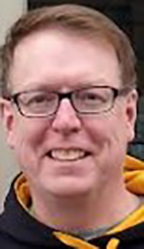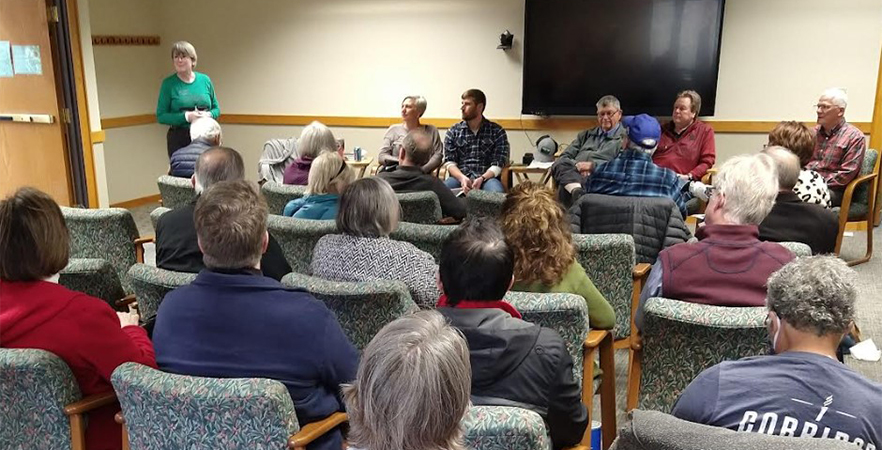 Solar power is the fastest growing source of energy in the world because it avoids pollution from burning fossil fuels and can be installed in a cost-effective manner. In the United States, more than 2,500 churches and other houses of worship have now added solar power.
Solar power is the fastest growing source of energy in the world because it avoids pollution from burning fossil fuels and can be installed in a cost-effective manner. In the United States, more than 2,500 churches and other houses of worship have now added solar power.
On April 23, congregational leaders and members gathered with solar energy developers and advocates at Prairiewoods to share knowledge about how to add solar power for churches and other nonprofits. Leslie Wright, Prairiewoods’ executive director, moderated the forum.
Prairiewoods has been a leader in solar power, installing solar power more than 15 years ago and recently adding more solar through its partnership with the nonprofit I-Renew.
At the forum, David Gustafson, board member of I-Renew, said that I-Renew’s expanded solar system now generates approximately $1,000 a year of free electricity for Prairiewoods.
Rich Patterson, emeritus director of the Indian Creek Nature Center and an owner of Winding Pathways LLC, said that his church, Peoples Unitarian in Cedar Rapids, added solar power and improved energy efficiency and conservation to cut its electric bills from $260 per month to $22 per month.
It was the easiest fundraising he had ever done, Patterson added. He helped raise $21,000 in two weeks for the church solar project.
Larry Steffen, president of the Iowa Solar Energy Trade Association and an owner and executive vice president of Eagle Point Solar, said that at his home, he has not paid anything other than the basic utility connection charge in the eight years since he installed solar power.
Solar now makes even more sense for churches and other nonprofits, with new incentives that were passed by Congress in 2022 as part of the Inflation Reduction Act, according to Steve Guyer, energy policy manager for the Iowa Environmental Council.
While guidance continues to be released by the Internal Revenue Service, Guyer said, nonprofits may be able to receive a federal refund of 30% of their costs for installing solar, potentially more if the nonprofit uses American-made solar equipment, includes battery storage, or meets other criteria.
Financing may be available for nonprofit solar projects if a customer can’t or doesn’t want to pay the costs of the solar installation up front.
Steffen pointed out that every solar project is a little different, depending on what utility serves the area, what space is available on a property, and what a customer’s electrical and financial needs are.
Genie Maybanks, executive director of the Iowa Solar Energy Trade Association, said that nonprofits that are interested in adding solar power can reach out to members of the Association to learn more. More information is available at https://www.iowaseta.org.
After the forum, participants were able to visit individually with speakers, and Gustafson led a tour of I-Renew’s training facility at Prairiewoods and the solar installations on site.
In addition to the organizations who provided speakers, the forum was sponsored by the Linn Clean Energy District and Iowa Interfaith Power & Light.
—Rob Hogg
Rob Hogg helped organize the forum as part of Interfaith Power & Light’s “Faith Climate Action Week.” He is a member of Christ Episcopal Church in Cedar Rapids. If you have questions, you can contact him at senatorrobhogg@gmail.com.



